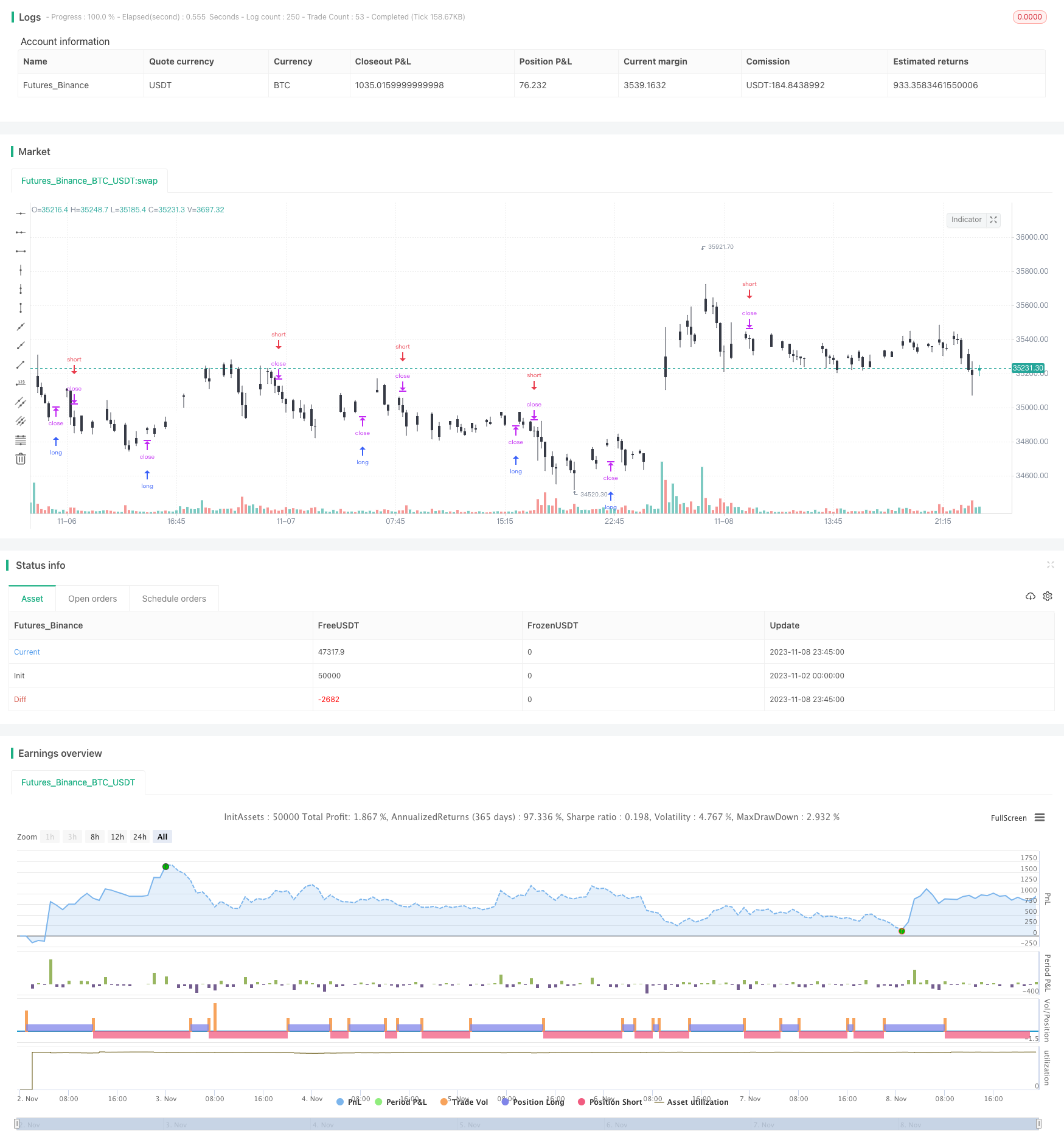
概述
本策略基于动量指标,结合移动平均线,实现追踪市场趋势的目的。当价格上涨势头较大时做多,当价格下跌势头较大时做空,属于趋势跟踪类策略。
策略原理
计算价格的动量值momentum,公式为:(当前价格-N周期前价格)/N周期前价格
计算价格的移动平均线mid,参数为N周期移动平均
将动量值归一化处理normalize,将其映射到0-1区间
当归一化后的动量值大于0.5且价格高于移动平均线时,做多
当归一化后的动量值小于0.5且价格低于移动平均线时,做空
采用移动止损机制,设定合理的止损位置
以上就是策略的基本交易逻辑。当市场处于趋势状态时,价格会连续涨跌,从而产生较大的动量值。策略会根据动量值的大小来判断趋势的力度,并结合移动平均线的方向来决定入市。此外,止损设置也非常重要,可以有效控制风险。
优势分析
这种策略具有以下几点优势:
追踪市场趋势,收益潜力较大
动量指标对价格变化敏感,可以快速响应趋势
移动平均线滤除随机波动,与动量指标组合使用效果好
采用止损策略,可以限制个别交易的损失
交易逻辑简单清晰,容易实现与回测
可灵活调整参数,适应不同周期和市场环境
总体来说,这是一个非常适合跟踪趋势市场的策略,在一些具有明显方向性行情中,其获利能力会非常强劲。
风险分析
尽管具有诸多优势,这种策略也存在一些风险需要注意:
多头行情中,存在突破上轨后再度回落的风险,移动止损可能被秒杀
空头行情中,存在跌破下轨后反弹的风险,移动止损同样存在被套的可能
当市场震荡环绕移动平均线时,会产生多次不必要的交易信号
参数设置不当时,动量值和移动平均线可能发出错误信号
本策略更依赖趋势,在震荡横盘市场中表现不佳
须严格控制止损比例和移动幅度,防止止损过小或过快被突破
针对这些风险,需要优化止损策略,宽松参数过滤不必要信号,调整参数配适不同周期,并控制仓位规模等。
优化方向
本策略还有以下几点可以进一步优化的方向:
可以测试不同参数对回测结果的影响,选择最佳参数组合
可以加入海龟交易法则,当亏损达到2N时清仓,获利达到1N时清仓
可以结合波动率指标优化止损位置,根据市场波动率调整止损幅度
可以添加仓位管理模块,根据回撤、时间等因素调整仓位大小
可以试验不同的动量计算方式,如指数平滑移动平均动量指标
可以加入candlestick图形筛选,过滤一些鲁棒的交易信号
可以尝试机器学习算法进行参数优化、特征选择等
可以引入一定的人工经验,在关键点辅助策略决策
通过以上办法,可以期望进一步增强策略的稳定性、适应性与SUFFIX性。但任何优化都需要严格统计验证,避免过度优化。
总结
动量追踪策略是一个简单实用的趋势策略。它能敏锐捕捉市场趋势,在追涨杀跌中获得丰厚收益。但也需要注意防范回测曲线过于美化,严格控制风险,保持策略稳健性。通过参数调优和功能扩展等优化,可以使策略在更多市场环境下获得稳定收益。
/*backtest
start: 2023-11-02 00:00:00
end: 2023-11-09 00:00:00
period: 15m
basePeriod: 5m
exchanges: [{"eid":"Futures_Binance","currency":"BTC_USDT"}]
*/
//@version=3
strategy("Momentum Strategy, rev.2", overlay=true)
//
// Data
//
src = input(close)
lookback = input(20)
cscheme=input(1, title="Bar color scheme", options=[1,2])
//
// Functions
//
momentum(ts, p) => (ts - ts[p]) / ts[p]
normalize(src, len) =>
hi = highest(src, len)
lo = lowest(src, len)
res = (src - lo)/(hi - lo)
//
// Main
//
price = close
mid = sma(src, lookback)
mom = normalize(momentum(price, lookback),100)
//
// Bar Colors
//
clr1 = cscheme==1?black: red
clr2 = cscheme==1?white: green
barcolor(close < open ? clr1 : clr2)
//
// Strategy
//
if (mom > .5 and price > mid )
strategy.entry("MomLE", strategy.long, stop=high+syminfo.mintick, comment="MomLE")
else
strategy.cancel("MomLE")
if (mom < .5 and price < mid )
strategy.entry("MomSE", strategy.short, stop=low-syminfo.mintick, comment="MomSE")
else
strategy.cancel("MomSE")
//plot(strategy.equity, title="equity", color=red, linewidth=2, style=areabr)